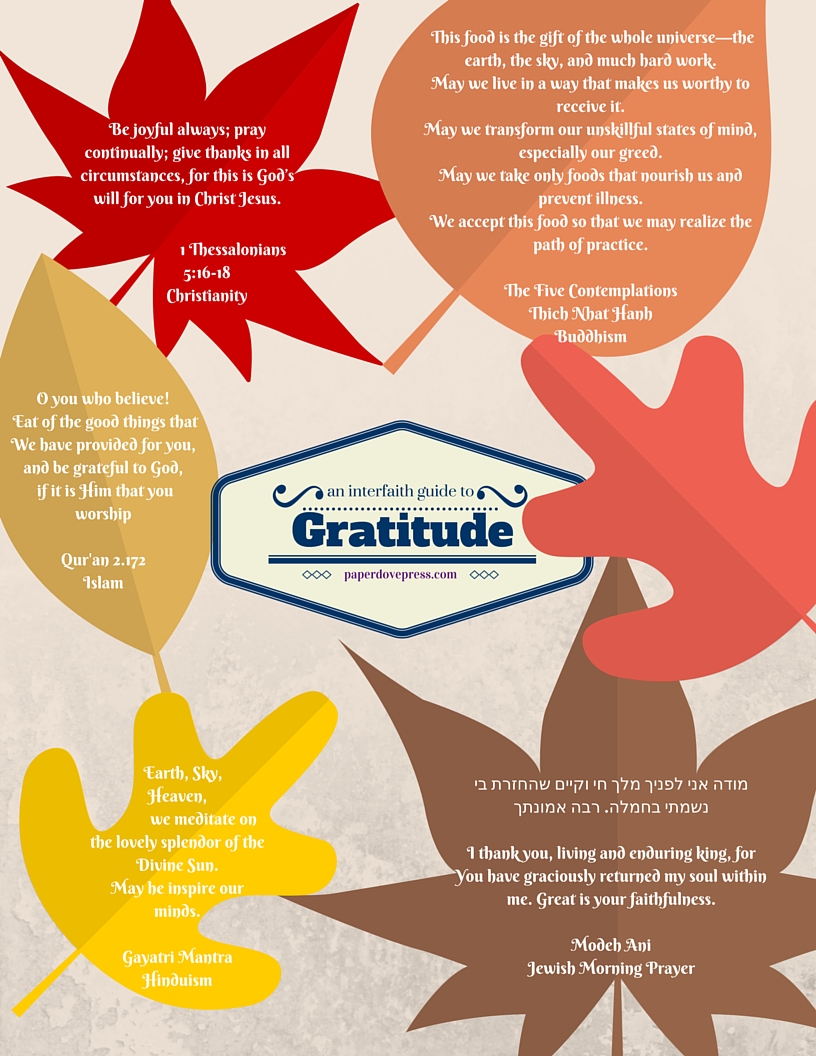by Laurel Nakai
I gave a presentation recently to a group of parents on teaching interfaith to children. We had a great discussion about why it’s important, and how to begin. Before we start talking about interfaith, I often get asked about how to talk to kids about faith in general. There is a real desire for many parents to instill the traditions or importance of spirituality in their children, but they just don’t know how to start the conversation in an age appropriate way. That’s one reason I wrote “The World God Made for Me”. It came out of my desire to talk to my own children about faith, and made me ask the question, “What do I want them to know?” Here was my answer: I want them to know that they can have a personal relationship with God/the divine/the universe (whatever you want to call it) and I want them to know that we are all in this together, that people might believe in different Gods or no God, but that there are important and wonderful things we can all still agree on.
So how do we begin the conversation?
Know that it is a journey
You are walking this walk together and the conversation about faith is something that will continue throughout you and your child’s life. You don’t have to start quizzing your child on scripture or including them in traditions that they don’t understand. Start small, and as they get older you will be able to introduce more complex ideas.
Show them how faith applies to their daily life
Ask yourself, what is the most important thing I want them to know right now? Boil things down to a single concept: Love, gratitude, respect for nature, and find little ways to bring those concepts into daily life.
Use stories
Most children love nature, because of this, Creation stories are a great way to begin the conversation about God. Read the creation story from your own tradition and read Creation stories from other faiths and cultures. There is a reason that so many scriptures consist of parables. We learn through stories, especially young children. Seek out age appropriate books or media that have a message of faith. Remember though, to talk with your child about what she is reading or watching. You can help guide the discussion and connect the dots on how it applies to their own life.
Studying other faiths does not have to dilute your own
This is a common misconception that I have found through my own life to be completely false. I think we need to be willing to let our children think critically about their faith. When we study other faiths with an open mind, it has been my experience that we find much more in common than we do differences. We live in a multi-cultural and connected world. Chances are high that your child will interact with people of different faith backgrounds. Putting theological issues aside, having children see that children in other faiths are like them in many ways is a good lesson in empathy. On a larger level, if we want to create a world where religious violence is a thing of the past, then we need to teach the next generation that it is possible to find common ground.
Lead by example
Your children will follow your model. If attending a religious service is important to your own faith, make it part of your family’s tradition. If interfaith is important to your philosophy, let your child see you interacting in a positive way with people of other faiths. Visit another church, temple, or mosque, with your child. Read stories with diverse characters
You don’t have to know all the answers
Remember that this journey of faith is one that will last a life time. As parents, we are still walking our own path. We never stop pondering the big questions. It’s okay to say, “I don’t know” or “Here’s what I believe, but other people think this...” Show them that it’s okay to ask questions, and that you will always be there to help find the answers.



















